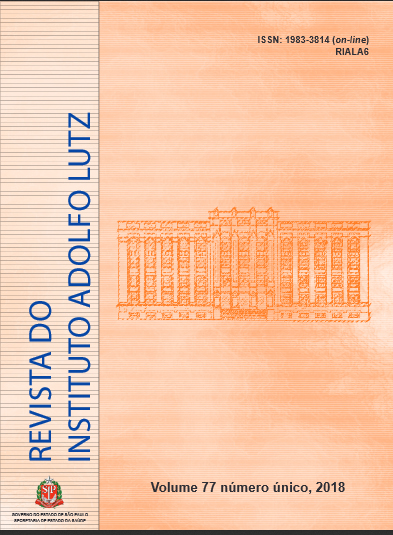Resumen
Aspects of how geospatial technologies can be used on visceral leishmaniasis (VL) control programs are discussed. We reviewed a number of papers discussing the usage of those technologies, through a PubMed literature review. Additionally, we provided conceptual elements for a development of a hierarchical scale framework on VL for decision making in São Paulo State, using Geographical Information Systems. Supported by Geospatial Techniques, we developed a view of some instruments for helping communities to better manage their risk areas. We used a classification called Strengths of GIS and Spatial Analysis in Epidemiology (SGISSAE). This review identified 50 papers published in the PubMed. With respect to developing the theoretical perspective, this paper can help to identify points of deficiency in shortage in discussions and leishmaniasis control programs, which led us to recommend future to delimitation studies to at community-based level and to define local actions to identify and manage the disease. In the conceptual framework data at community-based level will allow us to understand more broadly the changing spatial distribution of the disease.
Citas
1. World Health Organization. Global leishmaniasis update, 2006-2015, a turning point in leishmaniasis surveillance. Wkly Epidemiol Res. 2017;92(38):557–65. Available in: http://www.who.int/wer
2. World Wide Fund for Nature (WWF). An Inside View of MATOPIBA. Switzerland: WWF Agric Progr; 2017. Available in: https://d3nehc6yl9qzo4.cloudfront.net/downloads/livreto_matopiba_engl_final.pdf
3. D’Andrea LAZ, da Silva Fonseca E, Prestes-Carneiro LE, Guimarães RB, Yamashita RC, Soares CN et al. The shadows of a ghost: a survey of canine leishmaniasis in Presidente Prudente and its spatial dispersion in the western region of São Paulo state, an emerging focus of visceral leishmaniasis in Brazil. BMC Vet Res. 2015;11:273. https://dx.doi.org/10.1186/s12917-015-0583-6
4. Menezes JA, De Castro Ferreira E, Andrade-Filho JD, De Sousa AM, Morais MHG, Rocha MAS et al. An Integrated Approach Using Spatial Analysis to Study the Risk Factors for Leishmaniasis in Area of Recent Transmission. Biomed Res Int. 2015;2015:621854. https://dx.doi.org/10.1155/2015/621854
5. Pigott DM, Bhatt S, Golding N, Duda KA, Battle KE, Brady OJ et al. Global distribution maps of the Leishmaniases. Elife. 2014;3. https://dx.doi.org/10.7554/eLife.02851
6. Werneck GL, Costa CHN, Walker AM, David JR, Wand M, Maguire JH. The Urban Spread of Visceral Leishmaniasis : Clues from Spatial Analysis. Epidemiology. 2011;13(3):364–7. Available in: http://www.jstor.org/stable/3703410
7. Jacquez GM. Spatial analysis in epidemiology: Nascent science or a failure of GIS? J Geograph Syst. 2000;2:91–7. Available in: http://citeseerx.ist.psu.edu/viewdoc/download?doi=10.1.1.468.1483&rep=rep1&type=pdf
8. Environmental Systems Research Institute (ESRI). ArcMap. ArcGIS 10.2. Redlands, CA; 2013.
9. Box GEP. Science and statistics. J Am Stat Assoc. 1976;71(356):791–9. https://dx.doi.org/10.2307/2286841
10. Buchan I, Seminar HS. Aim & objectives of seminar; 2003.
11. da Silva AVM, de Paula AA, de Pita Pereira D, Brazil RP, Carreira JCA. Canine Leishmaniasis in Brazil: serological follow-Up of a dog population in an endemic area of american visceral leishmaniasis. J Parasitol Res. 2009;2009:680790. https://dx.doi.org/10.1155/2009/680790
12. Madalosso G, Fortaleza CM, Ribeiro AF, Cruz LL, Nogueira PA, Lindoso JAL. American visceral leishmaniasis: factors associated with lethality in the state of São Paulo, Brazil. J Trop Med. 2012;2012:281572. https://dx.doi.org/10.1155/2012/281572
13. Koffi AJD, Doumbia M, Fokou G, Keita M, Koné B, Abé NN. Community knowledge, attitudes and practices related to schistosomiasis and associated healthcare-seeking behaviours in northern Côte d’Ivoire and southern Mauritania. Infect Dis Poverty. 2018;7(1):70. https://dx.doi.org/10.1186/s40249-018-0453-0

Esta obra está bajo una licencia internacional Creative Commons Atribución 4.0.
Derechos de autor 2018 Elivelton da Silva Fonseca, Moara de Santana Martins, John B Malone, Raul Borges Raul Borges
